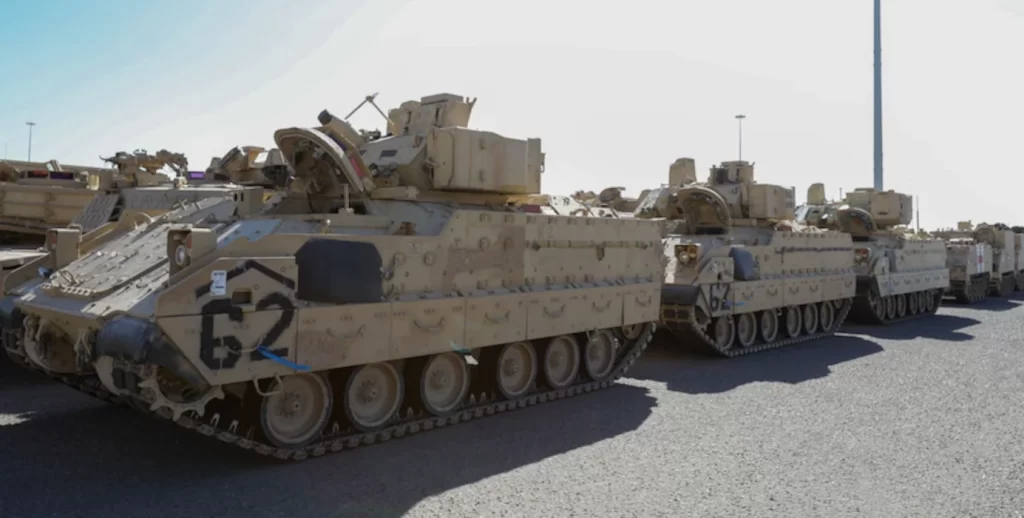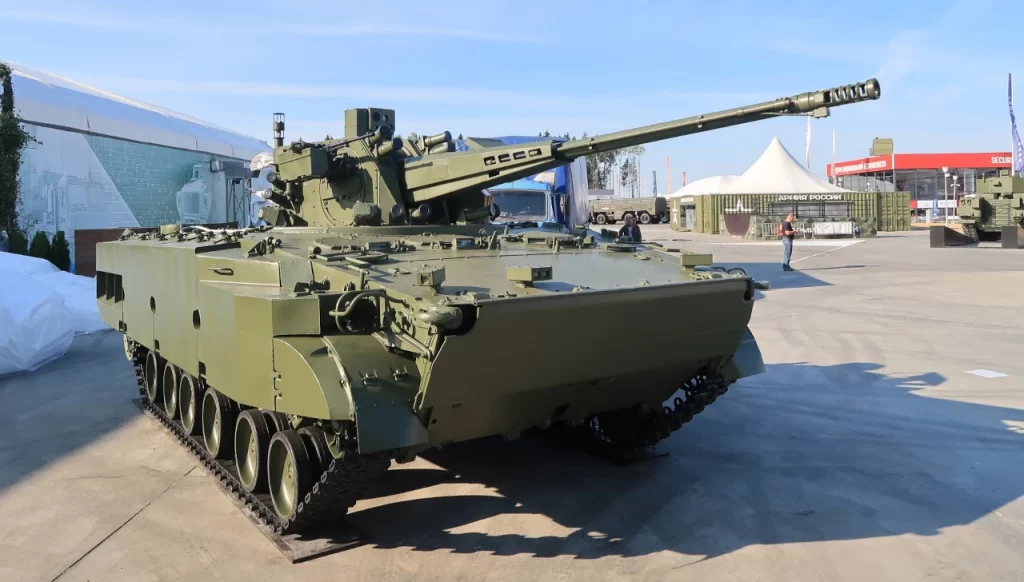The primary reason for the disappearance of light tanks from the battlefield is the development of infantry combat vehicles (IFVs). These vehicles are not only lightweight and equipped with a diverse array of weapon systems, but they also have the capacity to transport infantry. In other words, an IFV has the capability to conduct reconnaissance, provide fire support, and, in certain situations, execute sabotage operations in the enemy’s rear. Light tanks are about to make a comeback, but their appearance remains unclear due to current trends. A prospective concept has the potential to resolve a critical issue in contemporary warfare: the proliferation of drones on the battlefield.
Concepts of Light Tanks
In the past, light tanks were combat vehicles that were both fast and lightly armored. Light tanks were equipped with a wide variety of weapons, including automatic cannons, anti-tank guns, and howitzers. Light tanks were briefly relevant in the post-war period, but only until the 1960s. Subsequently, many countries started efforts that pushed the development of IFVs.
IFVs are interesting due to their ability to transport infantry, be equipped with a diverse array of armament systems, and be lightweight. In the West, early IFVs were equipped with automatic cannons, whereas in the Soviet Union, they were mounted with 73mm smoothbore guns. Subsequently, the Soviet Union supplanted the “Grom” gun with a 30mm automatic cannon, and the BMP-3 integrated both automatic and cannon calibers into its 100mm gun. Therefore, why “reinvent the wheel”?
The challenge in NATO countries is the strategic mobility to third-world countries and beyond. The weight of classic Western main battle tanks (MBTs) renders air transport inefficient, while sea routes are excessively lengthy. Additionally, the number of MBTs is restricted in comparison to their lighter counterparts due to the additional space required to transport a large, hefty tank. The “Sprut” was the outcome of the post-Soviet effort to develop an airborne vehicle with a tank armament. Today, it is more comparable to a “tank destroyer” or “self-propelled artillery system,” which is a term that, to a certain extent, applies to all tanks. The ongoing necessity for MBTs in the classical sense to penetrate enemy defenses and provide operational fire support to the infantry is exemplified by modern realities. Nevertheless, there is a significant issue: First Person View (FPV) drones have the capability to destroy any target.

Modern Concepts
At present, there are three primary concepts. The initial step entails preserving and improving the capabilities of IFVs. This includes the expansion of the range of targets, including aerial ones, and the enhancement of firepower, all while maintaining the ability to convey infantry in the armored compartment. Examples include the US Army’s Bradley A4 upgrade program, Russian BMP-3M modernization, the British Warrior Capability Sustainment Programme, and the Swedish CV90 continuous evolution.
The second concept involves the development of a more lightweight MBT that maintains its tank-caliber weapons. Examples include the Russian “Sprut,” Chinese ZTQ-15, Indian Zorawar, and American M10 “Booker.”
The third alternative is to create new, larger-caliber automatic cannons and install them on existing platforms, such as IFVs, but without the infantry compartment. In this manner, a “light tank” obtains improved weaponry and is capable of engaging a diverse array of battlefield threats. However, it serves as a support vehicle for armored vehicle classes that are already in existence. An illustration of the third concept is the Russian 2S38 “Derivation-PVO.”

The “Derivation” is currently being prepared for deployment to the frontlines, with a primary focus on anti-aircraft artillery duties. The 2S38 is capable of engaging low-flying targets, such as FPV drones, without the necessity of active detection systems like radar, as a result of the return of a well-forgotten 57mm automatic cannon, advanced electronics, and targeting systems. It will be employed in a manner comparable to the self-propelled anti-aircraft guns of the 1950s, which were employed in armored groups located near the rear to safeguard against aviation threats.
In addition, the “Derivation” is capable of neutralizing light adversary fortifications and armored vehicles, such as MBTs, with its relatively decent armor and caliber weighing just over 20 tons. Although the primary armor may not be penetrated, this is not a prerequisite; the 57mm projectiles have the potential to damage the gun barrel or observation devices, as well as external components of the fire control system, thereby rendering the tank inoperable. It is even less probable that BMPs, APCs, and MRAPs will be able to withstand a few impacts from 57mm kinetic rounds, as their armor was never intended to withstand such calibers. At most, they can withstand 30mm automatic cannons.
Adapting to Modern Warfare Challenges
The necessity for strategic mobility and versatile armament in contemporary conflicts has led to the resurgence of light tanks. The objective of these new light tank designs is to confront modern challenges, including the ability to engage a diverse array of targets on the battlefield, provide rapid deployment capabilities, and provide effective fire support to counter FPV drones.
